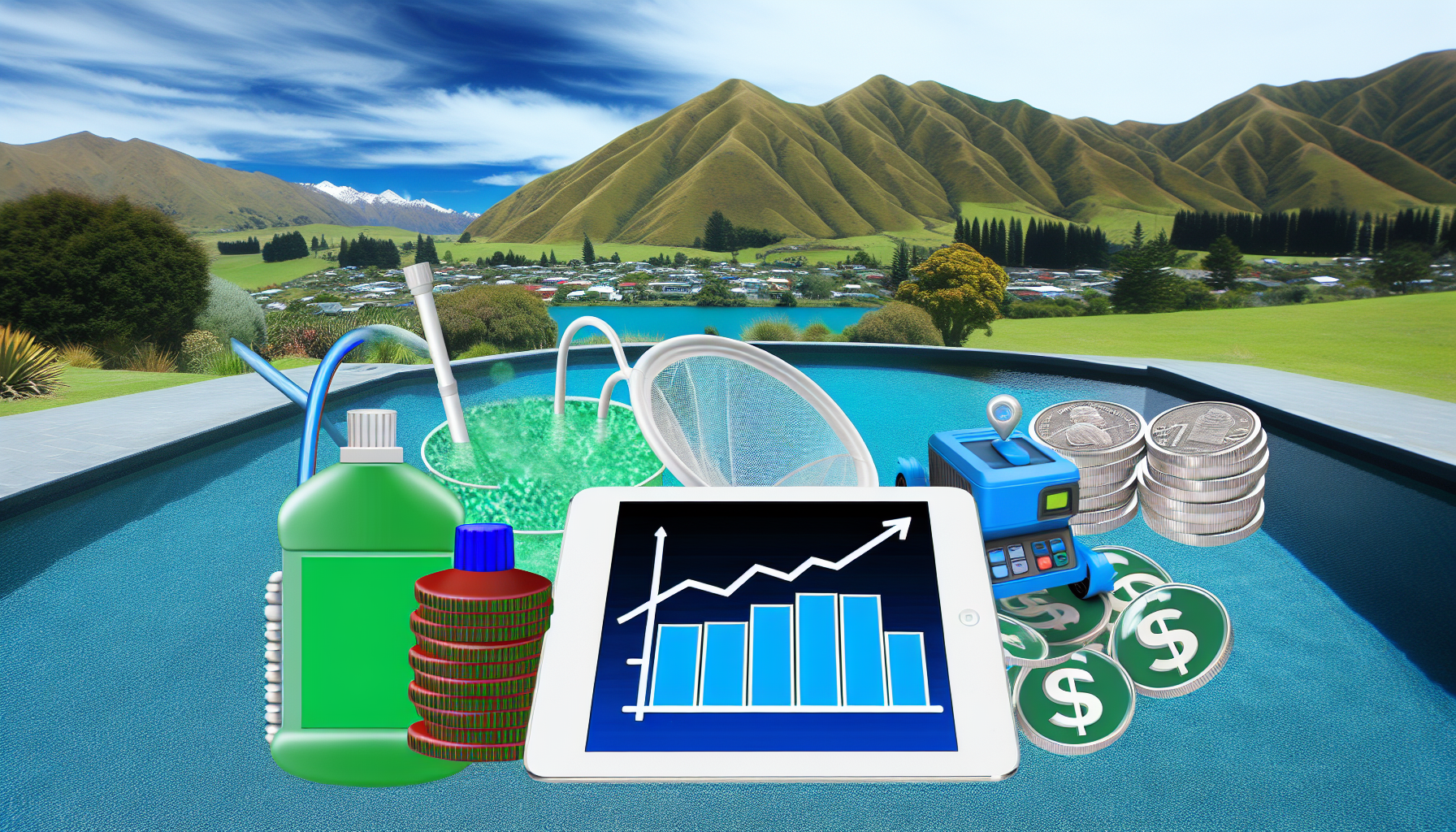Keep Your Pool Clean Without Draining Your Wallet
Owning a pool in New Zealand is great—until you realise how much it can cost to keep the water clean, the pump running, and the chemicals balanced. The good news? You don’t have to throw money down the drain to keep your pool in top shape. With a few smart tweaks, you can cut costs and still enjoy crystal-clear water. Here’s how.
Use a Pool Cover (Seriously, Use One)
Let’s start with the easiest money-saving move: a pool cover. It’s like putting a lid on your coffee—it keeps everything from evaporating too fast. Without one, your pool loses water, heat, and chemicals way quicker than you think. And that means more top-ups, more heating, and more chemicals.
A good-quality pool cover from a local retailer like Para Rubber or Pool & Spa Warehouse will trap heat, reduce water loss, and stop leaves and debris from making their way in. Less cleaning and fewer chemicals? That’s a win.
Run Your Pump at Off-Peak Hours
Your pool pump is one of the biggest energy guzzlers in your home. Running it during peak hours (usually 7 am–11 am and 5 pm–9 pm) means you’re paying premium electricity rates. Instead, set it to run during off-peak times—usually overnight or in the early afternoon.
In most cases, running your pump for 6–8 hours a day is enough to keep things moving. If you’re running it 24/7, you’re just burning through money. Check your power rates with your provider or see if switching to a time-of-use plan could help.
Balance Your Chemicals Properly
Pool chemicals aren’t cheap, and overusing them is the equivalent of throwing cash straight into the water. Test your water regularly—at least once a week in summer—to keep everything balanced. You don’t need to load up on chemicals if things are stable.
The key ones to check?
- pH level (7.2–7.6 is ideal)
- Chlorine levels (don’t go overboard)
- Alkalinity (keeps pH stable)
- Calcium hardness (prevents surface damage)
You can grab an affordable water testing kit from places like The Warehouse or Bunnings NZ. Testing yourself means fewer trips to the pool shop, and fewer chances of getting upsold on things you don’t need.
Use Baking Soda Instead of Expensive pH Increasers
Here’s a little secret: the “pH increaser” you’re buying at the pool shop? It’s just sodium bicarbonate—also known as baking soda. And guess what? You can get a big bag from the supermarket for way less.
If your pool water is too acidic, adding baking soda will bring the pH up without the hefty price tag of branded pool chemicals. Check the dosage (usually about 500 grams per 50,000 litres of water will raise alkalinity by 10 ppm), and adjust as needed.
Scoop and Brush Regularly (So Your Filter Works Less)
More debris in your pool means your filter has to work harder, leading to more frequent backwashing and higher water and chemical loss. The solution? Spend a few minutes each day with a skimmer net and brush to keep things clean before they become a bigger problem.
Think of it like tidying your house a little every day instead of waiting until everything’s a mess and doing a deep clean. Regular maintenance means less wear and tear on your pump and filter, which means fewer repairs and lower energy costs.
Backwash Only When Needed
Speaking of backwashing, don’t do it more than necessary. Every time you backwash, you’re wasting hundreds of litres of water and the chemicals in it. Instead of doing it on a set schedule, check the pressure gauge on your filter—only backwash when it’s around 8–10 psi higher than normal.
Go Solar for Pool Heating
If you’re heating your pool with electricity, your power bill is probably through the roof. Installing solar heating panels might seem like a big upfront cost, but they’ll pay for themselves in a few seasons.
Check out Sunlover Heating NZ or Hot Water Heat Pumps for solar options. Even using solar rings or a solar cover can make a noticeable difference in keeping your water warm without a big electricity bill.
DIY Where You Can
Pool shops love selling you extra services, but a lot of maintenance jobs are simple enough to do yourself. Things like:
- Cleaning the pump basket and skimmer basket regularly
- Tightening any loose fittings to stop leaks
- Checking O-rings and seals for cracks (a tiny crack can lead to major water loss)
- Doing your own shock treatments instead of getting a professional to do it
By the way, if you ever need a bit of help, YouTube is full of DIY pool maintenance videos specific to New Zealand conditions—worth a look before calling in a pro.
Shop Smart for Chemicals and Supplies
You don’t have to get everything from big-name pool stores. Sometimes, you can get the same products cheaper from hardware stores, supermarkets, or local online retailers. Check prices from:
- Trade Depot
- Mitre 10
- Chemist Warehouse NZ for bulk hydrogen peroxide (used for some pool sanitation methods)
Doing price comparisons before buying can lead to surprising savings—don’t just grab the first thing you see at your nearest pool store.
The Bottom Line? Small Changes Add Up
Saving money on pool maintenance isn’t about cutting corners—it’s about making smart choices. A pool cover, off-peak pump running, DIY testing, and a few cost-effective swaps (like baking soda for pH balancing) can make a huge difference without sacrificing water quality.
So, instead of pouring money into your pool, use these tricks to keep your costs down while still enjoying a clean, well-maintained oasis in your backyard.


Leave a Reply